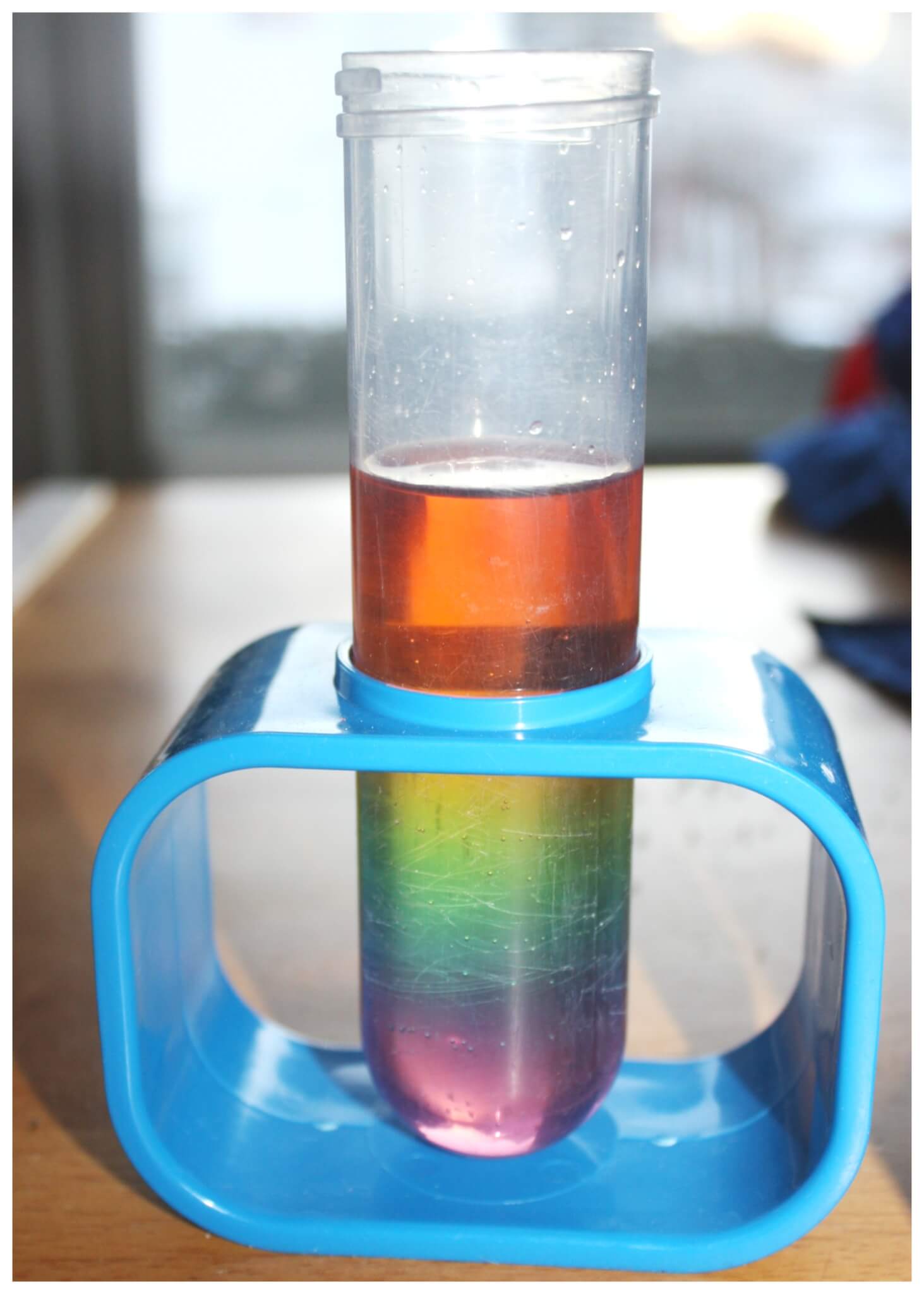R Rainbow Colour Reaction
Here Is the List of the reactions that are used to form rainbow colour in chemistry.That are Easily available in a School chemistry lab.

For Violet Colour - Use Potassium Permanganate And Cold Water
4KMnO4+ 2H2O → 4MnO2 + 3O2 + 4KOH
For Prussian Blue - Use Potassium Hexacyanoferrate and FeCl3
3K4[Fe(CN)6] + 4FeCl3 → 12KCl + Fe4[Fe(CN)6]3
For Pink Colour - Use Potassium Permanganate and Hot water
( KMnO4 + Water is heated till gets Pink)
4KMnO4+ 2H2O → 4MnO2 + 3O2 + 4KOH
For Green Colour - Use Iron Salt and Sulphuric Acid And Water
Fe2+ + H2SO4 + xH2O → FeSO4 + H2O + 2H+
For Yellow Color - Use K2CrO5
Dissolve in water
For Orange Color - Use K2Cr2O7
Dissolve in Water
For Red color Use Fe(SCN)3-
take any organic compound containing nitrogen and Sulphur , If it is solid then react it with Na using fusion tube , and if the organic compound is liquid then remove H2O from it , then put Na metal in it.
Na + C + N + S → NaSCN
[ From O.C.]
3NaSCN + FeCl3 → 3NaCl + Fe(SCN)3
Comments
Post a Comment